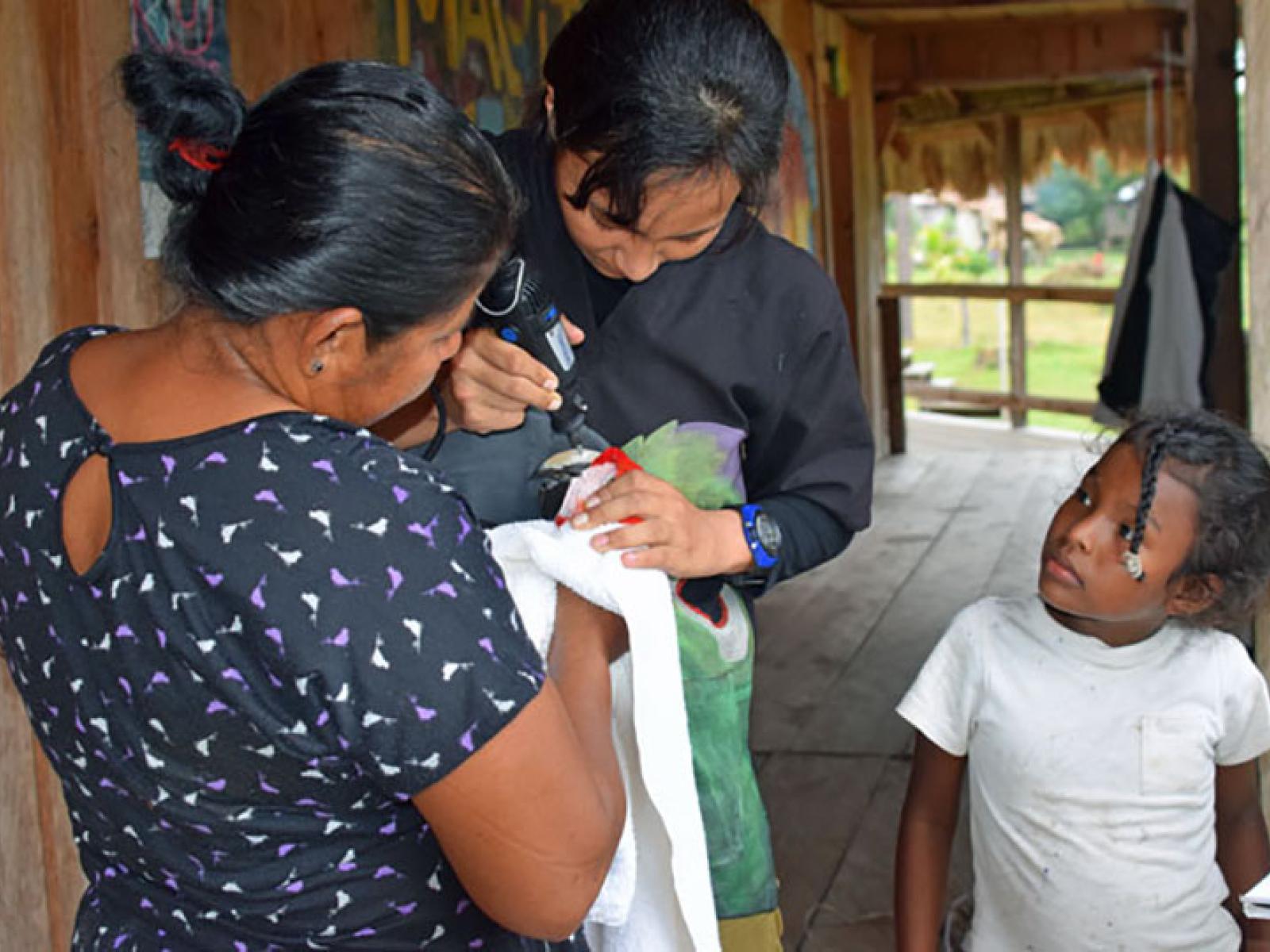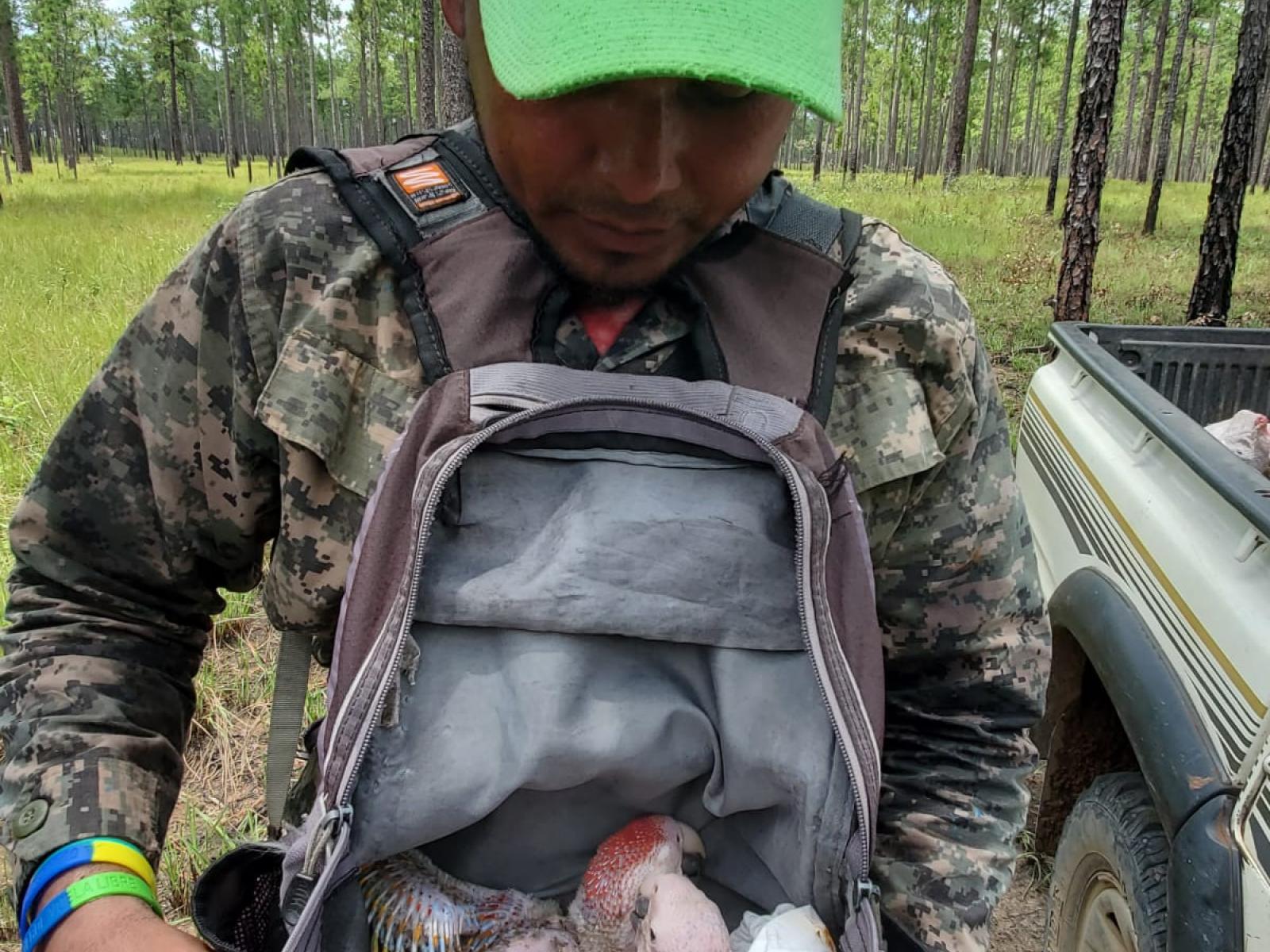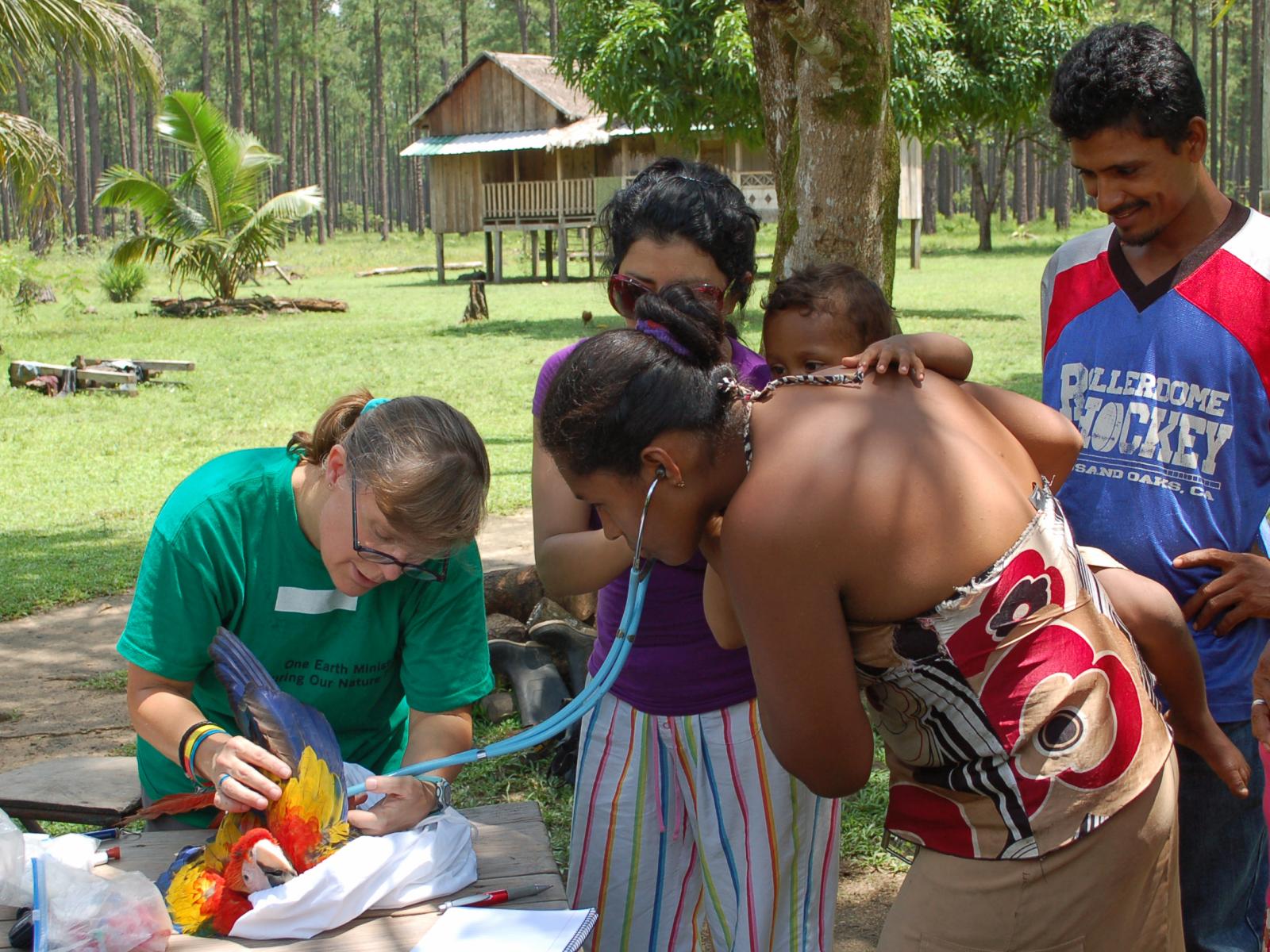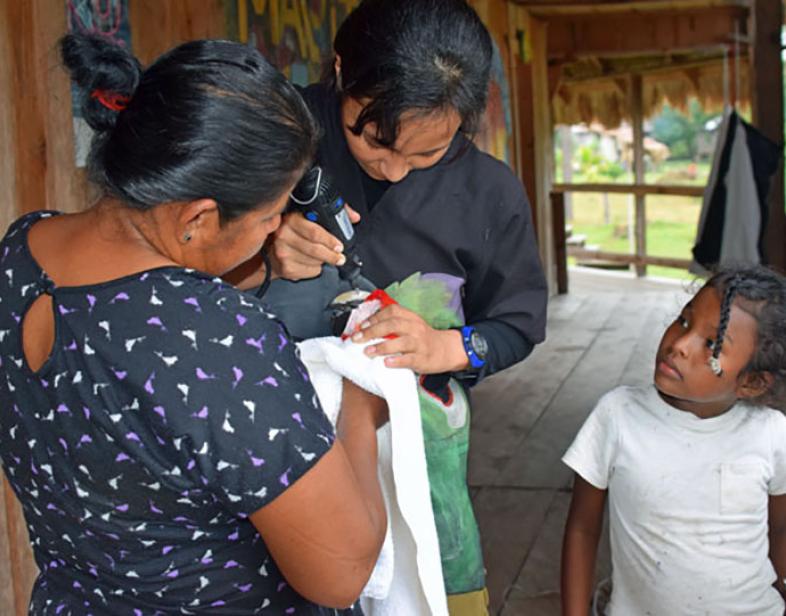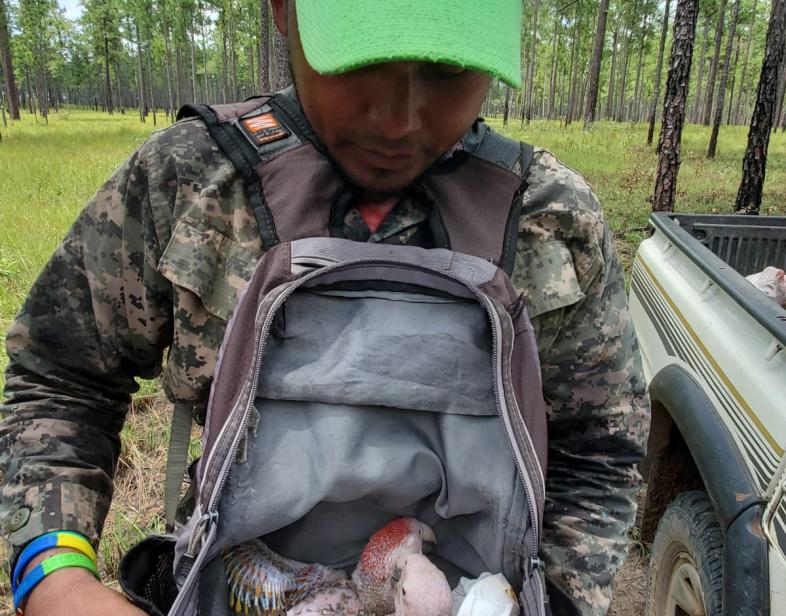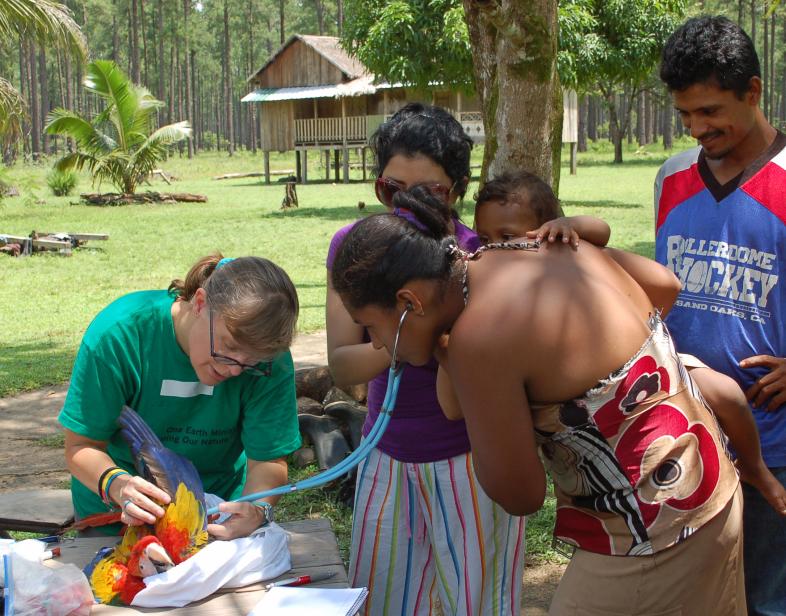An Overview Of Our Solution
One Earth Conservation (OEC) has developed a replicable model for successful parrot conservation projects in Latin America by working in places that receive little attention and where parrots are threatened. We work with local, marginalized and mostly Indigenous people to create Parrot Conservation Corps (PCC) consisting of conservationists who learn to conduct sustainable conservation projects as we support them with training, funds, guidance and solidarity.
For 2.5 years, OEC has been testing a novel method to start new projects by offering online PCC trainings, in English and Spanish, to teach our conservation methods and create mini teams to sprout new projects. The 2022-23 online Spanish PCC is developing new conservation leaders in 8 Latin American countries. We encourage them by offering stipends to these participants and small grants for their projects.
- Population Impacted: 56076
- Continent: North America
姓
名
机构类型
电子邮件
背景分析
One Earth Conservation (OEC) works with parrots as a gateway species who can guide us to transform the way people perceive and treat nature and each other. We are a small USA-based nonprofit organization that is having a large impact on parrot conservation and human attitudes towards nature in Latin America. Our mission is to promote parrot well-being in the Americas by conducting transformative parrot conservation, taking action to end the wildlife trade and encouraging in people a strong sense of connection to all life that results in the well-being of all.
Our project in La Moskitia, Honduras began on a shoestring budget. Called the Apu Pauni (Scarlet Macaw) Project, it has grown to be the largest wild parrot conservation area in the world protected by community patrols. With local partners, we have reduced scarlet macaw poaching there from 100% to under 20% by patrolling 500,000 acres of Indigenous territory.
Parrots serve important functions in ecosystems by serving as primary and secondary seed dispersers (“farmers of the forest”). They also protect plants from pests, provide food for scavengers, help regenerate soil, increase the yields of plant flowers and fruits and are found on five continents. Parrots are excellent wildlife ambassadors to people who find them familiar and charismatic. However, they are disappearing rapidly from the wild due to the wildlife trade and habitat loss. Parrots often live where there are marginalized people, many of whom seek a new way of working that makes it possible for them to NOT join an extractive economy and instead engage in sustainable development and regenerative work. Some of our project areas are hit hard by poverty, limited health care access and education choices, extractive activities, corruption and violence. Our projects decrease the wildlife trade, protect biodiversity, improve animal welfare and empower Indigenous and other marginalized communities by addressing core oppressions of domination and inequality.
描述您希望目标受众采用的技术解决方案。
With years of field experience, OEC has developed a replicable model for successful parrot conservation projects by working in places that receive little attention and where parrots are threatened. We work with local, marginalized and mostly Indigenous people, creating Parrot Conservation Corps (conservationists) who learn to conduct sustainable parrot conservation projects as we support them with training, funds, guidance and solidarity. OEC raises their capacity and motivation to care for wild parrots, helps them develop conservation plans, brings in local NGO, government and other partners and teaches them organizational intelligence and prosocial concepts. They become invested in and able to manage their own projects and attitudes change once they understand the importance of parrots to their communities. This slow process varies depending on local culture, species, habitats and socioeconomic factors. We intend to be present for at least a generation to ensure successful projects.
描述你的行为干预。
OEC shares knowledge of the scope of the trade in poached parrots with local people, governments, universities and the public. We ask people what they need and want and then help them build their own projects that rely on networking and employment of community members who serve as monitors and protectors. Respectful employment engenders commitment to conservation and involving stakeholders increases the chance for attitude changes and conservation success.
Our holistic approach gains the support and participation of local people as stewards of their environments and animals. To change people’s behavior we develop relationships with them and involve them with parrots. We help them realize their own values can preserve biodiversity and healthy ecosystems, teach biodiversity science and the importance of parrots and lead social, emotional and organizational intelligence workshops. This orients people towards the meaning of wildlife to their culture and gives them a purpose beyond earning income. These are long-term, sustainable behavioral changes that don’t need a large influx of money. People learn and teach others about parrots and spend time with them in their conservation activities. These efforts are making an impact on conservation in the Americas. For example, our project on Guanaja Island, Honduras has increased the population of critically endangered yellow-naped amazons by 113% by conducting patrols, installing nest boxes, monitoring chick health and public education.
使用的行为杠杆
如需要,请更详细地解释你是如何使用杠杆的。
Information:
- Trainings on caring for and understanding parrots
- Communities meet to exchange information
- Visit schools and universities
- PCC trainings
Rules and Regulations
- Do not trap or poach parrots
- Enforcement by community and sometimes government
Material Incentives
- Pay stipends for work, meetings
- Provide equipment and other resources
- Financial rewards deter poaching and reward finding nests
Emotional Appeals
- Pride motivates work teams
- People are interested in learning and collecting data about parrots
- Encourage people to share their emotions
Social Influences
- Promote and celebrate target behaviors and success
- Communities evolve new cultural norms against poaching and pass them to the next generation
- Written agreements help to reach target behaviors
Choice Architecture
- Develop conservation plans and behaviors and commitments to meet goals
- Regular parrot population counts provide prompts and reminders about target behaviors
描述项目的实施。
OEC’s success comes from working in solidarity and partnership with local communities and infusing our work with the paradigm that imbues individuals of all species with worth and dignity. To help communities address the problem of the domestic and international trade in parrots, OEC hires, trains and involves local people in parrot conservation work. We give them autonomy, train them in social and organizational intelligence and perform widespread community outreach to get people involved in caring for parrots. They engage in activities that include conducting population counts, protecting and monitoring nests, installing nest boxes and rescuing and releasing injured and confiscated birds. Being with the parrots and working as a team changes people in a big way. To ensure our solution is adopted and promotes change we identify and involve key community leaders and track nest success data and community engagement. We also confirm there are enough parrots left to protect, so their work will have a positive impact. Learning that their birds are in trouble and knowing they can make a real difference motivates local people.
Enabling conditions include finding local partners for the parrot conservation work – such as NGOs, government agencies and landowners – and doing our best to ensure the safety of all involved. Most participants are paid for their commitment to the project, which enables them to devote time and energy needed for success and halt harmful activities they might engage in for income, such as poaching parrots. Importantly, OEC provide other resources, such as equipment and supplies, and continues to show up and provide guidance as much as possible each year.
Obstacles our projects often face include the high international demand for parrots, lack of funding and corruption and violence. Every year, OEC continues to work with local partners and government agencies to together find ways to build infrastructure to resist these great odds against success.
描述项目的主导者。谁在主导项目实施?
Project Director LoraKim Joyner, who is also Co-director of OEC with Gail Koelln, has worked in avian conservation in the Americas for more than 36 years as a wildlife veterinarian. Her training, skills and experience as a Unitarian Universalist minister and Certified Trainer in Nonviolent Communication provide her with an effective and unique way of conducting biodiversity preservation and parrot conservation.
The most important leaders, however, are the incredible people in local communities who do the daily, on-the-ground work. These leaders are highly diverse and include women, youth, Indigenous people, residents of cities and rural areas, individuals with all levels of education (including none) and others. What they all share are a passionate commitment to protecting parrots and their environment, an eagerness to learn new skills and knowledge to achieve project success and the strength to deal with both the large and small challenges they may face.
分享参与解决方案开发和实施的关键合作伙伴。
One Earth Conservation works closely with diverse project partners in Guatemala, Guyana, Honduras, Nicaragua, Paraguay and Suriname. Depending on the project, we may work in partnership with:
- local villages
- local landowners (often ranchers and farmers)
- local NGOs, including conservation groups and those that address agricultural and health issues
- other international wildlife conservation organizations, such as the Wildlife Conservation Society, Conservation International and Fauna and Flora International
- religious leaders, such as the Catholic Diocese in Pt. Lempira, Honduras
- universities and their students, such as Georgetown University in Guyana, and
- government agencies (such as Instituto Nacional de Conservación y Desarrollo Forestal, Áreas Protegidas y Vida Silvestre/ICF in Honduras), who we often train so we can undertake operations together. Some government agencies also often provide protection for parrot rangers in dangerous locations.
Our projects receive support from institutional donors, such as the US Fish and Wildlife Service, Vincent J. Coates Foundation, Wildlife Conservation Society and Harrison’s Bird Food.
For example, in 2021-22 OEC assisted local government patrols in Guatemala with undertaking 10 visits to our conservation areas that protect the yellow-headed amazon. Their government agency, CONAP, helped the project with nest box placement and responded immediately when local parrot rangers reported poaching activity in the conservation areas. One Earth Conservation also offered a bi-coastal parrot conservation workshop in May 2022 that included this project and our yellow-naped amazon project on the southern coast of Guatemala. This workshop not only provided training and increased the skills of Guatemalan parrot conservationists, but it also increased social capital and allowed all participants to coordinate, at a national level, how best to address the needs of amazon parrots in Guatemala.
谁采用了期望的行为,采取的程度如何? 解释一下你如何测量行为变化的。
People have adopted desired behaviors to an amazing extent, impacting government workers, NGOs, businesses, farms, communities, pet owners, poachers, traffickers and children. Local PCC participants protect parrots via patrols, monitoring nests, rehabilitating rescued birds, installing nest boxes and doing population counts. Data collected measures nest success, poaching rates, population size, the number of rangers working and, via surveys, attitudes and awareness. We monitor project maturity by watching for initiatives and activities that are increasingly independent from OEC input.
Currently, we are paying 489 people in 5 countries and in 2022 345 threatened and endangered parrot nests (of 12 species) were protected. Parrot poaching has slowed in all projects, decreasing from 100% poaching to less than 20%. In La Moskitia, Indigenous rangers control vehicles, supplies, payment and developing conservation plans as OEC mostly asks questions and supports them in their decisions.
项目是如何影响水污染的?请详细说明并包括相关的测量方法。
The main focus of our projects is biodiversity conservation, with parrots serving as model and charismatic species. When we save parrots, we save trees (where many species nest) and other species living in parrot habitats. The most important measurements are nest success and, after that, parrot population counts. The first step in a project is to conduct a parrot population count to collect baseline data against which future progress or lack thereof can be measured. More counts are conducted at least annually. We track as many nests as can be identified, the number of successfully fledged chicks and overall nesting success. Generally, our projects have reduced parrot poaching from 100% to less than 20%.
Our emotional, social and organizational intelligence trainings are infused with conservation theory and implementation inspires participants to not only want to protect their parrots, but also other wildlife and the local environment. Poachers are indeed transforming into protectors.
您的解决方案如何促进平等(包括种族、性别、民族、社会阶层/收入,或其他)?
The largest impact our projects have are on the local, mostly Indigenous, people with whom we work. They usually live in marginalized, patriarchal and low-income communities where education beyond the primary level is rare. The stipends the people receive have raised their standards of living and empowered them to advocate for themselves and their native birds. Importantly, the projects also endeavor to involve as many women as possible in roles such as parrot ranger and rescue center workers, sometimes even providing childcare and food for children to allow more women to participate (a total of 106 women work as parrot ranges in all of OEC’s projects). For example, in 2021 OEC supported and joined our partner NGO, INCEBIO, to implement a women-centered parrot ranger training program in Honduras where women monitored and protected nests, leading to increased participation of women in the overall conservation efforts and increased quality of life for their families.
社会和/或社区是如何受益的?
Community and social co-benefits include:
- Changing attitudes towards parrots, other wildlife and habitats
- Empowering women
- Improving standards of living
- Connecting people to nature
- Introducing participants to OEC’s Nurture Nature concepts (i.e., emotional, social, multispecies, ecological, and spiritual intelligences)
- Increasing social capital, including governance
- Helping repair roads/bridges
- Assisting with transportation to medical appointments and some medicines
- Education support
可持续发展如何得到促进?
Sustainable development co-benefits include:
- Partnering with other NGOS and government agencies to introduce sustainable agriculture
- Developing eco-tourism (for example, in Guyana as part of our sun parakeet project) and similar projects to bring sustainable, ongoing revenue into local communities
- Creating a local research station to host visitors in La Moskitia, Honduras
- Increased social capital, which helps all projects and stakeholders
可持续性:描述你的解决方案的经济可持续性。
Paying conservation workers is currently dependent on grants and donations and OEC is growing our fundraising base. We also work with our partners to creatively find resources. In Guatemala, landowners supply workers for nest monitoring and protection. Participants in Suriname decided that parrot rangers who fish for a living will combine parrot patrols and counts with their fishing trips and have now established the first ever species-specific conservation project there. This work is raising conservation awareness and empowering local people to face and solve their own problems. The shift in attitudes and commitment, which increases the sustainability of our process, is transmitted to the next generation and is growing stronger over time.
投入产出:实施这些活动的成本是多少?与你上面的结果相比,你的结果如何 这投资吗?
Return on investment for our projects is high. OEC’s total 2021 conservation budget (the last full year available) was $170,029. This amount supported 8 projects in 6 countries for a full year. Dividing this amount by the 489 people currently employed by OEC results in costs of about $348 per person per year. And the amount per the number of parrot nests protected (345) is about $492 per nest (some of these funds support activities such as public education). For this small amount of funding, our projects have, on average, decreased parrot poaching from 100% to 20%, changed attitudes in local communities towards wildlife conservation and allowed people to support themselves and their families while protecting their local environment.
如何能将这个解决方案成功推广在其他地方?
OEC has already replicated our solution in 6 Latin American countries. We have also been testing for 2.5 years a novel method to start new projects by offering online PCC trainings in English and Spanish to teach our conservation methods and create mini teams to sprout new projects. The current online PCC is developing leaders in 8 countries. We encourage them by providing small grants for their projects and stipends when work is completed.
These activities can be replicated by reaching out to more communities, co-organizing new in person and online PCC cohorts and training other NGOs on our process. We will need at least $18,000/country/year to create new in person PCC projects. About $16,800 ($560/person) will support an annual online bilingual PCC for 30 people. If awarded, OEC will the $20,000 grant to support the 2023-24 online bilingual PCC and for related general operating costs. We also seek to raise about $175,000 in annual operating funds to strengthen OEC’s infrastructure.

